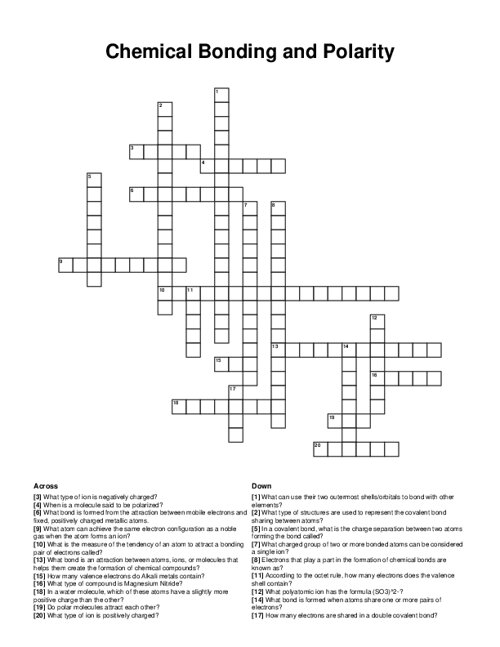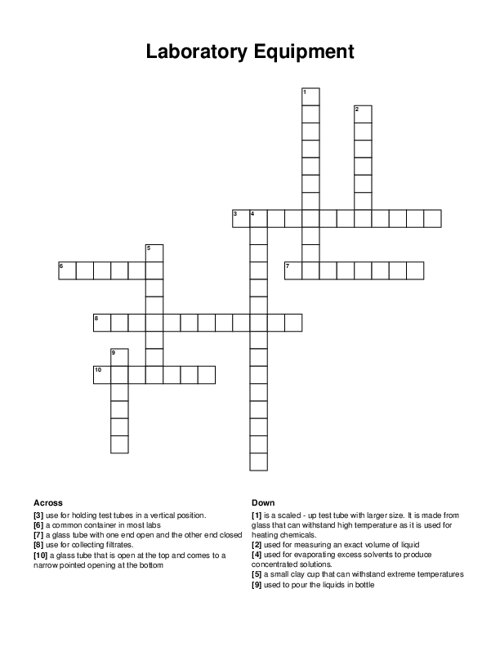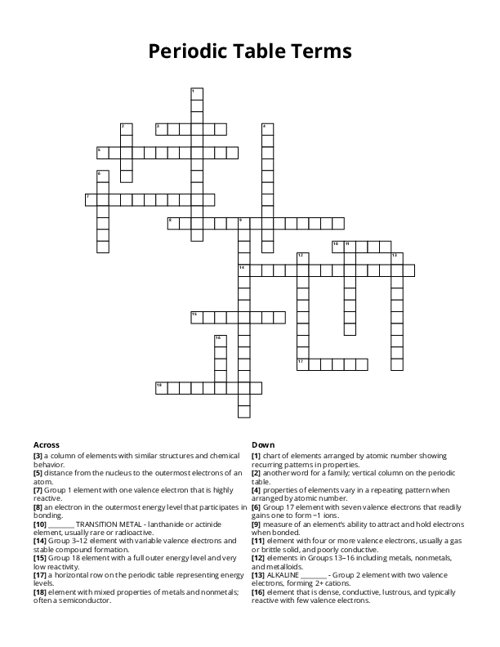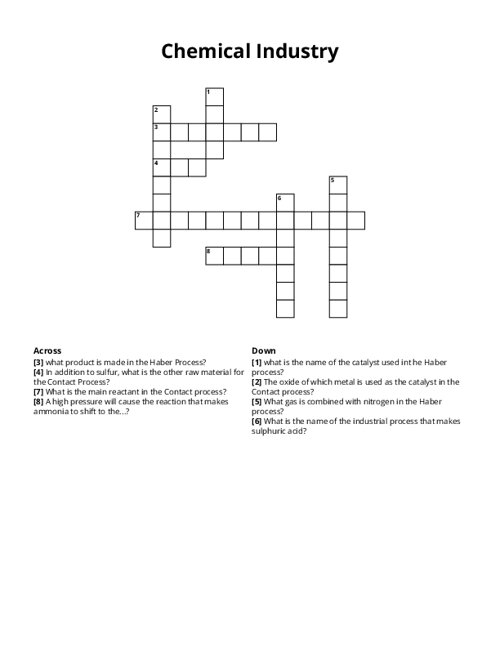Chemical Bonding and Polarity Crossword Puzzle
Download and print this Chemical Bonding and Polarity crossword puzzle.
Related puzzles:
QUESTIONS LIST:
- yes : do polar molecules attract each other?
- valence electrons : electrons that play a part in the formation of chemical bonds are known as?
- chemical bond : what bond is an attraction between atoms, ions, or molecules that helps them create the formation of chemical compounds?
- two : how many valence electrons do alkali metals contain?
- polarity : in a covalent bond, what is the charge separation between two atoms forming the bond called?
- eight : according to the octet rule, how many electrons does the valence shell contain?
- potassium : what atom can achieve the same electron configuration as a noble gas when the atom forms an ion?
- covalent : what bond is formed when atoms share one or more pairs of electrons?
- anion : what type of ion is negatively charged?
- sulfite : what polyatomic ion has the formula (so3)^2-?
- lewis structures : what type of structures are used to represent the covalent bond sharing between atoms?
- transitional metals : what can use their two outermost shells/orbitals to bond with other elements?
- dipole : when is a molecule said to be polarized?
- four : how many electrons are shared in a double covalent bond?
- hydrogen : in a water molecule, which of these atoms have a slightly more positive charge than the other?
- ionic : what type of compound is magnesium nitride?
- metallic : what bond is formed from the attraction between mobile electrons and fixed, positively charged metallic atoms.
- cation : what type of ion is positively charged?
- electronegativity : what is the measure of the tendency of an atom to attract a bonding pair of electrons called?
- polyatomicion : what charged group of two or more bonded atoms can be considered a single ion?





